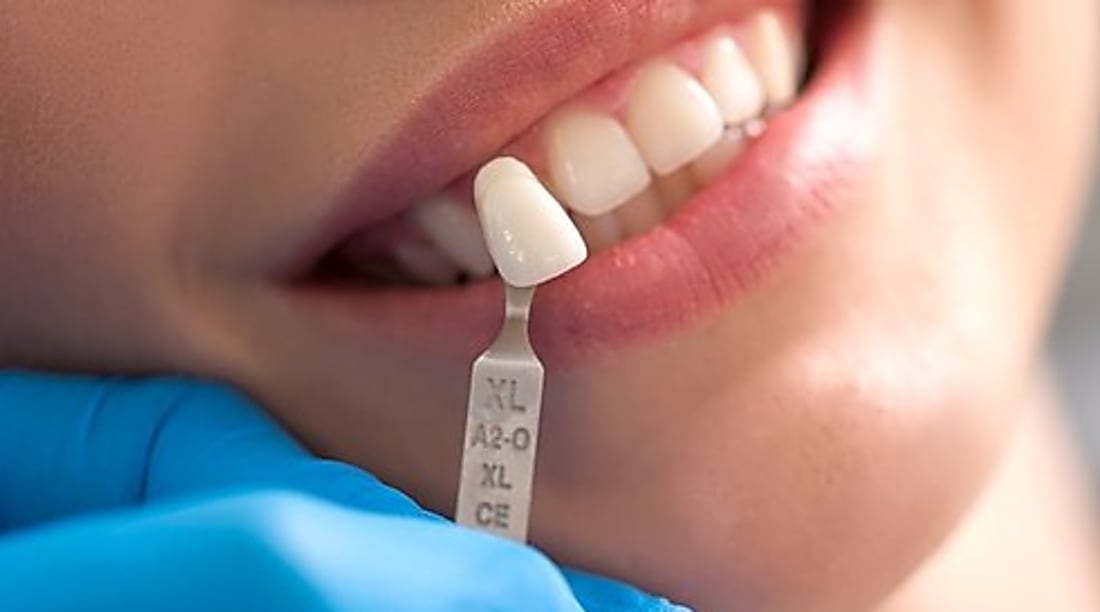Modern Denture Design: Adapting to Your Lifestyle
Invisible dentures use lightweight and flexible materials that adapt naturally to the gums, creating a discreet and comfortable fit. They support daily activities such as eating and speaking, while offering a natural look that helps people feel more at ease in social situations. Discover more inside.

The landscape of dental prosthetics has transformed dramatically, with innovations focusing on both visual appeal and practical comfort. Modern solutions utilize advanced materials and construction techniques that address the common concerns associated with traditional dental replacements. These developments have made it possible for individuals to regain confidence in their smiles while enjoying improved comfort throughout their daily activities.
Invisible Dentures – Modern and Comfortable Design
Contemporary dental prosthetics incorporate materials that closely resemble natural tooth enamel and gum tissue, making them virtually undetectable to observers. The clasps and frameworks used in these designs are often made from tooth-colored or translucent materials rather than visible metal components. Manufacturers now employ thermoplastic resins and flexible polymers that adapt to the contours of the mouth, reducing pressure points and eliminating the bulky appearance of older models. The base material is typically thinner yet durable, allowing for a more natural feel against the palate and gums. Advanced color-matching techniques ensure that the prosthetic blends seamlessly with any remaining natural teeth and surrounding tissue.
Understanding Flexible Invisible Denture Design
Flexible dental prosthetics represent a significant departure from rigid acrylic designs. These appliances utilize nylon-based thermoplastic materials that bend slightly with the natural movements of the mouth, providing a more comfortable fit during speaking and eating. The flexibility allows the prosthetic to adapt to minor changes in gum shape over time, reducing the frequency of adjustments needed. Unlike traditional designs with metal clasps, flexible options use extensions of the base material itself to secure the prosthetic in place, wrapping around existing teeth without visible hardware. This design approach distributes pressure more evenly across the gum tissue, minimizing soreness and irritation. The material is also lighter in weight, which many wearers find reduces fatigue during extended wear.
Adapting to Daily Activities with Invisible Dentures
Adjusting to dental prosthetics requires patience, but modern designs significantly shorten the adaptation period. Initially, wearers may experience increased saliva production and slight difficulty with pronunciation, particularly with s and t sounds. Practicing reading aloud and speaking slowly helps the tongue and facial muscles adjust to the new oral landscape. Eating requires a gradual approach, starting with soft foods cut into small pieces and progressing to firmer textures as confidence builds. Chewing on both sides of the mouth simultaneously helps maintain balance and prevents the prosthetic from shifting. Physical activities, including exercise and sports, are generally compatible with modern dental prosthetics, though a dental adhesive may provide additional security during vigorous movement. Proper oral hygiene remains essential, with daily cleaning using non-abrasive products and regular removal to allow gum tissue to rest.
Cost Considerations for Invisible Dentures
The financial investment in dental prosthetics varies considerably based on materials, complexity, and geographic location. Understanding the cost structure helps individuals make informed decisions about their dental care options.
| Type of Prosthetic | Material | Estimated Cost Range |
|---|---|---|
| Partial Flexible Prosthetic | Thermoplastic Nylon | $700 - $1,800 |
| Full Flexible Prosthetic | Valplast or Similar | $1,200 - $2,500 |
| Premium Aesthetic Partial | Acetal Resin | $1,500 - $3,000 |
| Implant-Supported Option | Titanium and Acrylic | $3,500 - $6,000 per arch |
Prices, rates, or cost estimates mentioned in this article are based on the latest available information but may change over time. Independent research is advised before making financial decisions.
Several factors influence the final cost, including the number of teeth being replaced, the need for preliminary procedures such as extractions or gum treatments, and the dentist’s experience level. Geographic location plays a significant role, with urban areas typically commanding higher fees than rural regions. Many dental practices offer payment plans or financing options to make treatment more accessible. Dental insurance coverage varies widely, with some plans covering a portion of the cost for basic prosthetics while excluding premium materials or aesthetic upgrades. Maintenance costs should also be considered, including periodic adjustments, professional cleanings, and eventual replacement after several years of wear.
Maintenance and Longevity of Modern Dental Prosthetics
Proper care extends the lifespan of dental prosthetics and maintains their appearance. Daily cleaning with specialized products removes food particles and prevents staining, while avoiding abrasive toothpastes protects the surface finish. Soaking overnight in a cleaning solution keeps the material hydrated and free from bacterial buildup. Regular dental checkups allow professionals to assess fit and make minor adjustments before discomfort develops. Most modern prosthetics last between five and ten years with proper care, though flexible materials may require replacement sooner due to natural wear. Avoiding extremely hard foods and not using teeth as tools prevents damage to both the prosthetic and any remaining natural teeth.
Choosing the Right Option for Your Needs
Selecting appropriate dental prosthetics involves evaluating multiple factors beyond aesthetics. The condition of remaining natural teeth, bone density, and overall oral health all influence which design will provide the best long-term results. Individuals with strong remaining teeth may benefit from partial prosthetics that preserve existing dental structure, while those with complete tooth loss might consider implant-supported options for maximum stability. Lifestyle considerations matter as well; active individuals who participate in contact sports or public speaking may prioritize security and natural appearance above all else. Consulting with a qualified dental professional ensures that the chosen solution aligns with both functional needs and personal preferences, resulting in a comfortable and confidence-inspiring outcome.
Modern dental prosthetics offer unprecedented combinations of comfort, aesthetics, and functionality. By understanding the available options and their respective benefits, individuals can make informed choices that support their lifestyle while restoring their smile. The investment in quality dental care pays dividends in improved confidence and quality of life for years to come.




